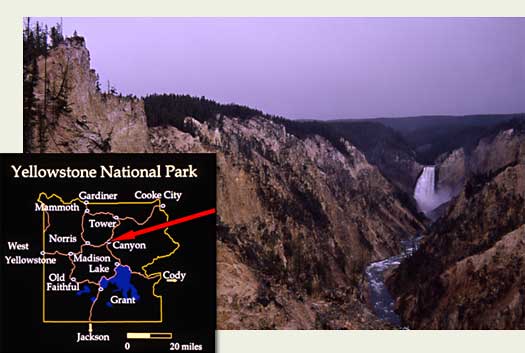
|
Lobby > Exhibits > Scientific Research > Hydrothermal Research > Vital Signs of the Earth > A Cross Section of a Hydrothermal System Hydrothermal ResearchCROSS SECTION OF A HYDROTHERMAL SYSTEM A. Clues to the canyon’s hydrothermal past are revealed by the area’s active hydrothermal features and colors. Ongoing erosion continues to unmask the Canyon's underground "plumbing" system. The Grand Canyon of the Yellowstone River is a 1,200 foot (366 m) cut into an ancient hydrothermal system. The canyon is of later origin than the rock through which it has been worn. Its course and outline were largely determined by underlying hydrothermal processes.  Approximately 500,000 years ago, volcanic ash, lava flows, and sediments flowed into the area now occupied by the canyon. Ash and lava flows from smaller eruptions continued to coat the area for thousands of years, eventually hardening into rhyolitic rocks and tuffs. An ancient hot water system formed, fueled by the underlying heat. Next | 1 > 2 | Next Section: A Mountain Turning Itself Inside Out |
|
||||||||||||||||||||||||||||||


